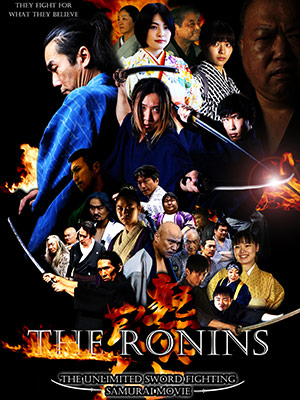Enshrines:
Emperor Kammu.
Emperor Komei.
About Heian Jingu
Emperor Kammu was born in 737 as the crown prince of Emperor Konin and ascended to the throne in 781 as the 50th Emperor of Japan. Realizing that the capital of Heijo was small in scale and beneath the dignity of our country, Emperor Kammu transfered the capital to Nagaoka in the province of Yamashiro and, further picking the adjoining districts of Kadono and Atago in 793 as the best possible site for the capital, began to construct a new palace. In the following year, the seat of government was moved to the new capital called the Heian Capital.
In 796, the Emperor held an audience for the first time at the Daigoku-den Palace at which dignitaries celebrated the New Year. This marked the beginning of Kyoto.
During his 25 year reign, Emperor Kammu amended the laws and ordinances, gave relief to the destitute, encouraged learning, innovated the domestic administration, and opened the doors to foreign trade, thereby contributing to the development of the country. For more than 1,000 years, until the Meiji Restoration, Kyoto prospered as the capital of Japan.
The 50th ruler passed away in 806 and was entombed in the Kashiwara Mausoleum in Momoyama, Fushimi-ku, Kyoto.
The year 1895 happened to be the 1,100th year since the Heian Capital was founded. Marking this commemorative year, the citizens of Kyoto decided to praise the virtues of Emperor Kammu and deify him as the ancestral god of Kyoto. To this end, they created a shrine in the style of Chodo-in, the main edifice of the Heian Capital, dedicating it on March 15th the same year.
Emperor Komei was born in 1831 as the crown prince of Emperor Ninko and acceded to the throne in 1847 as the 121st ruler of Japan. Though brief, his reign of 21 years marked the closing days of the Tokugawa Shogunate and hearalded the beginings of modern Japan. Well cognizant of the turbulent times, the gifted ruler laid the firm foundation of the Meiji Restoration. The Emperor passed away on December 25, 1866 at the young age of 36. The end of his life was characterized by his intense patriotic concern for the welfare and destiny of the country. The Imperial tumulus known as Gotsukinowa Higashiyama Mausoleum is located at Sennyu-ji Temple, Higashiyama-ku, Kyoto.
In adoration of the great character and achievements of the Emperor who laid the foundation of modern Japan, the citizens of Kyoto organized an association to deify Emperor Komei at the Heian Shrine in 1938. This propelled a move to rebuild the shrine as a commemorative project marking the 2,600th year of the founding of Japan. The dedication ceremony took place on October 19, 1940.
This is how two Emperors of Japan, one the founder of and the other the last ruler of the Heian Capital, have come to be deified at Heian Shrine. Today, it does not only figure as a tourist attraction for foreign visitors but also serves as the spiritual center of the nation as a whole, as well as of the patriotic citizens of Kyoto.
the Garden of Heian Jingu Shrine
The Shin'en consists of four gardens which surround the main shrine buildings on the south, west, middle, and east. With a total area of approximateley 33,000 square meters, these stroll-style landscape gardens are designated as a national scenic spot representative of Meiji-era (1868-1912) garden design.
Nishi Shin'en (West Garden)
The focus of the Nishi Shin'en is a quiet pond named Byakko-ike. The irises around the pond bloom in all their glory in early summer, lending the garden an ethereal beauty. A tea ceremony arbor called Choshin-tei is located in the cluster of trees in the garden's southwest.
Minami Shin'en (South Garden)
This garden is a Heian-style garden designed for holding Kyokusui-no-en, a garden party during which aristocrats amused themselves by composing Japanese poems. In spring, the garden is bright with the deep pink blossoms of drooping cherry trees. The cherry blossoms are followed by azaleas in early summer and by hagi (Japanese bush clover) in autumn. The garden contains a smaller garden called Heian-no-sono featuring plants and flowers which appear in Heian-period literary works.
Naka Shin'en (Middle Garden)
Visitors who pass through the cluster of trees behind the shrine's main buildings will find a beautiful garden called Naka Shin'en. this garden, as well as the Nishi Shin'en, was constructed in 1895. It contains the Soryu-ike pond which features the Garyu-kyo, a walkway consisting of stone pillars which once served as foundation stones for the girders of Sanjo Ohashi and Gojo Ohashi, famous bridges in the center of the city of Kyoto. The pond is surrounded by an exquisite expanse of rabbit-ear irises.
Higashi Shin'en (East Garden)
This garden was contructed in the early 1910s. In the center of the garden, there is a pond called Seiho-ike on which courtiers are said to have gone boating in ancient times. Borrowing the Higashiyama hills as background scenery, the garden contains two elegant old-style buidings - the Taihei-kaku and the Shobi-kan adjacent to it - which add to the garden's overall charm.
(Reference: The Official Web site)
Official Web site: http://www.heianjingu.or.jp/index_e.html






